Effects of Gravity
Three effects of Gravity and activities that demonstrate it
Free Download Below
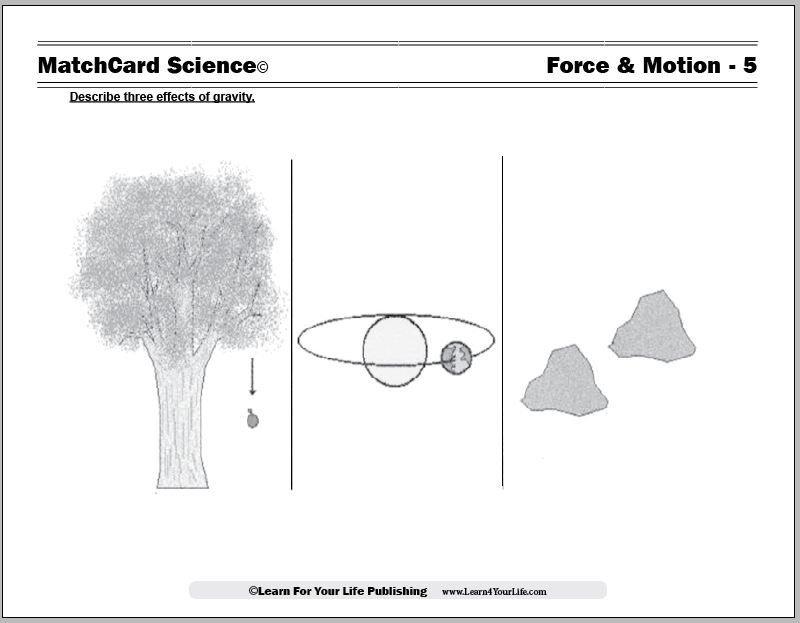
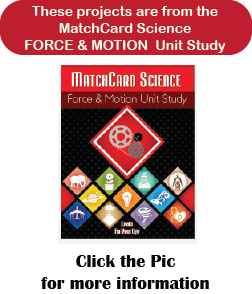
Let's Explore Gravity
Objective: Describe the three effects of gravity.MatchCard: Download below.
Diagrams the effects of gravity on the Earth's surface, with two celestial bodies in space, and attraction between two large bodies.
Projects: Play some tricks with the center of gravity. Does gravity have a larger effect on heavier objects?
Print the Effects of Gravity MatchCard
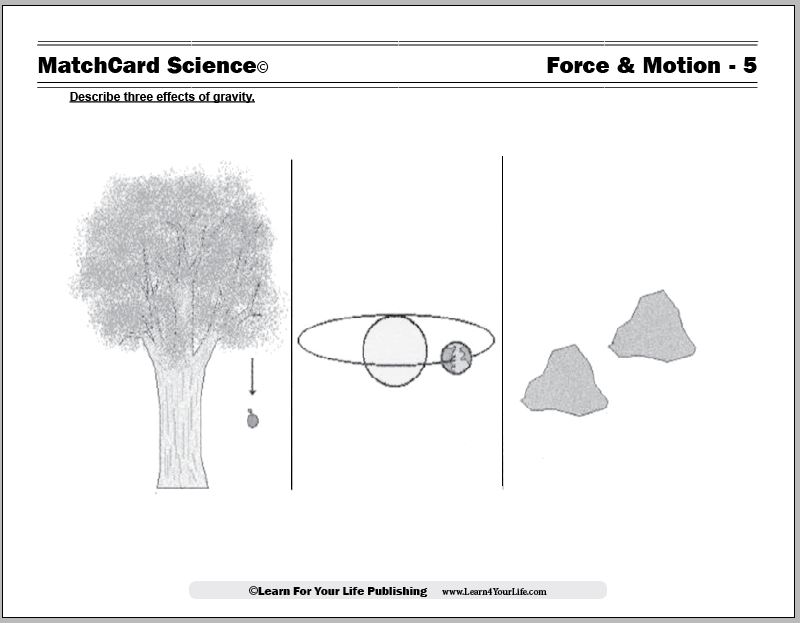

This is MatchCard #5 of the Force and Motion Unit Study.
You can find more information on MatchCard Science below.
So What Is Gravity?: Introducting the Lesson
Preliminary Activity
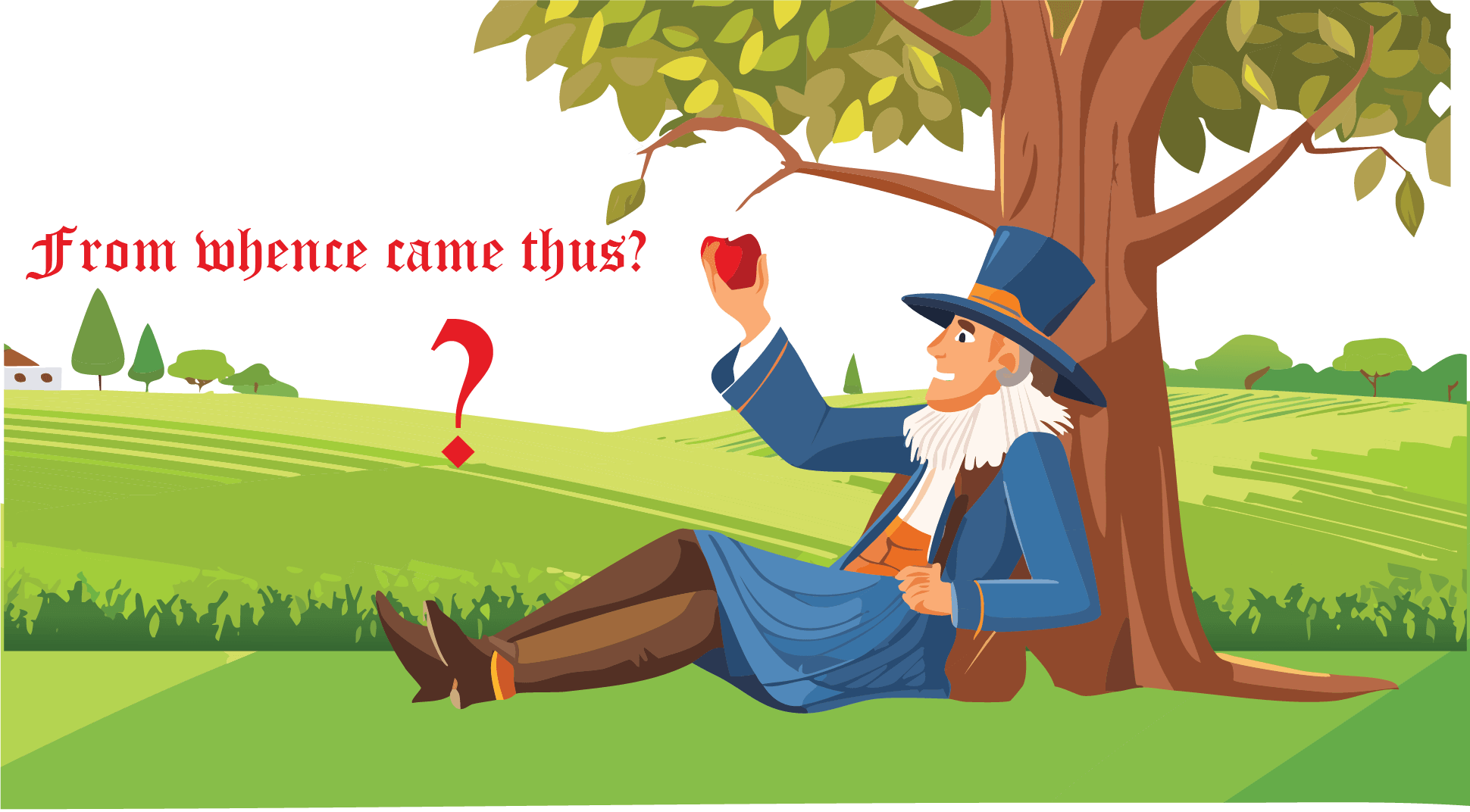
- Get a straight backed kitchen chair. (If your student is smaller, a child sized chair may be needed)
- Sit with your back straight against the back of the chair and your spine straight.
- Keep your feet flat on the ground.
- Fold your arms across your chest.
- Keeping your back straight, try to stand up.
Answer: The student cannot stand up while keeping his/her back straight, because the center of gravity cannot be moved.
Definition of Gravity
Gravity is a force that causes an attraction between all objects with mass. (All objects that have weight and take up space have mass.)Gravity and The Apple
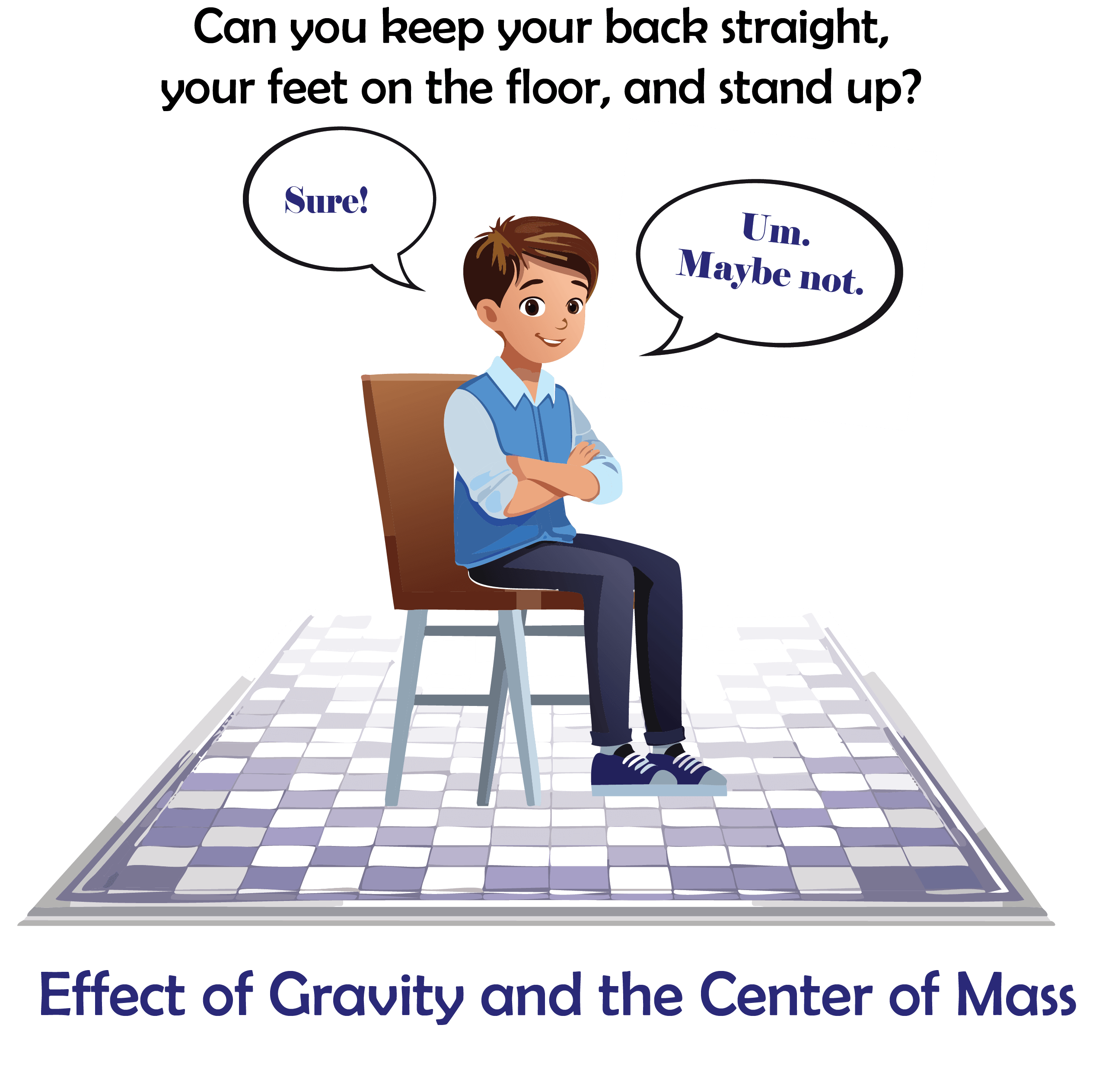
The story of Isaac Newton having an apple fall from a tree is well-known, though some scientific historians caution that it has not been proven. (Hmmm, how would you prove someone got hit by an apple 350 years ago, anyway?)
Students can share what they know about gravity, Newton's apple, and the contribution of Newton to science and mathematics. Extra credit activity could be to make a list of many of Newton's contributions to science. Regardless of whether he got hit on the head with an apple or not, it is impressive!
Three Effects of Gravity
Definition of Gravity
Gravity is a natural force of attraction between any two massive bodies. Gravity increases as the mass of the objects increases. It decreases when the distance between them increases.1st Effect: Objects to Earth
Objects are drawn towards the center of the earth. That's what makes things fall "down."Discuss this effect. How does it effect apples and other objects?
Brainstorm ways life on earth would be different without this effect of gravity.
2nd Effect: Celestial Bodies
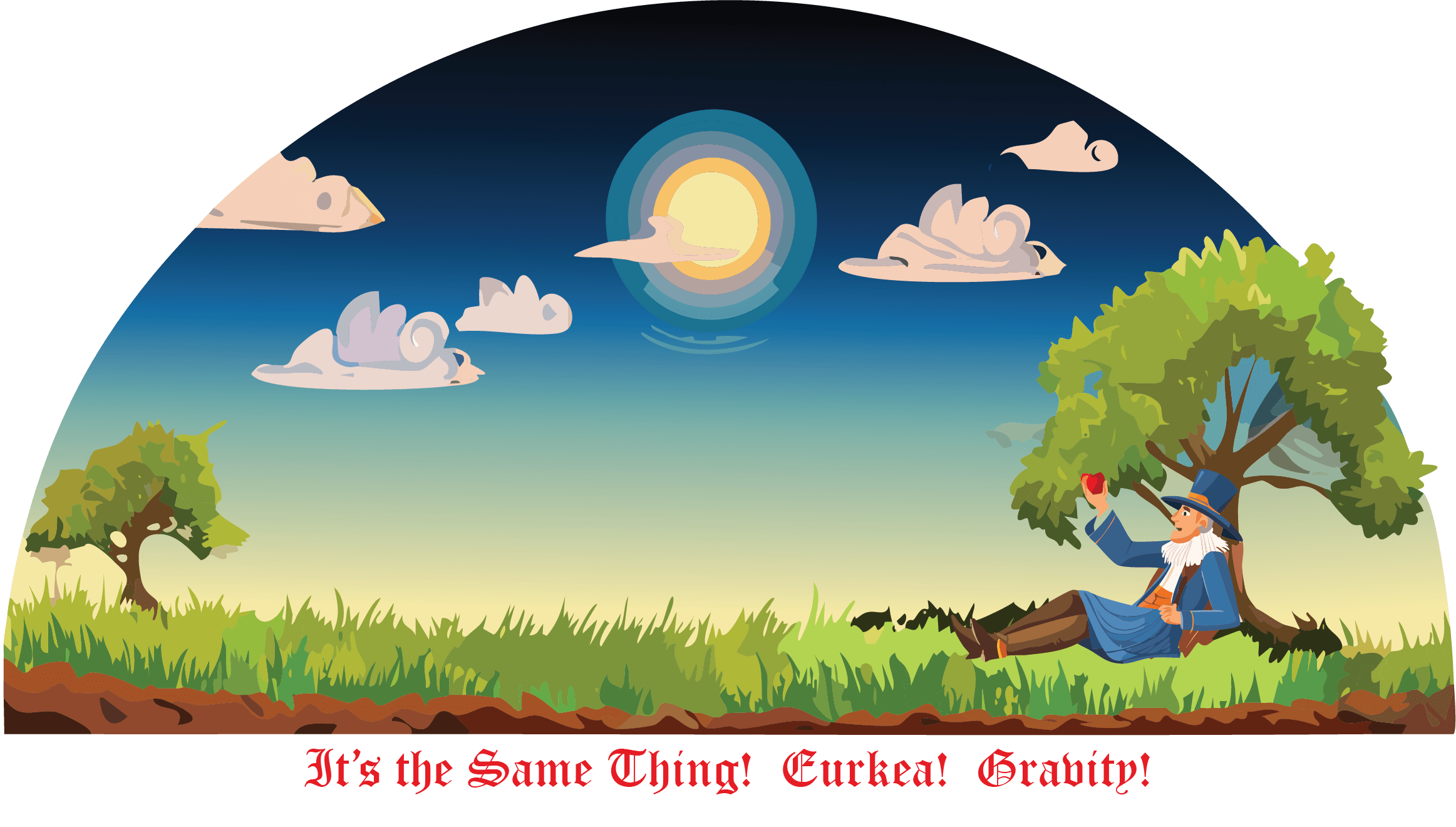
According to the legend reported by Newton, he was trying to figure out what keeps the planets and the moons in their orbit around the sun. As he was contemplating this subject, bang! An apple hit him in the head.
Thus, he reported, he had his "aha" moment. Just as the apple was drawn to the large surface of the earth, the moon is drawn to the earth, and the earth is drawn to the sun.
Gravity!
3rd Effect: Objects to Each Other
The attraction between two objects increases as the size increases, and decreases as the distance between them increases.Theoretically, the force of gravity can act on any two objects with mass. Put two books or other items on a table. Does gravity appear to be pulling them towards each other? (No)
Let one book or object fall. Gravity pulled it towards the center of the earth. Why didn't it pull the book towards the other book? (Answer - the earth has more mass than the other book.)
Besides items falling towards the center of the earth, do you see any other effects of gravity?
One of the most common is the daily tides. As the moon gets closer to a particular body of water, gravity pulls the water towards the moon. That affect weakens as the earth rotates and the moon is further away.
Gravity Activities
Effect of weight on Gravity
You will need objects approximately the same size, but different weight.Hold two objects of different weight at arms length. Drop them at the same time. They will probably hit the ground about the same time.
Drop them off a second or third story balconey (make sure no one is below.) Which one hits fastest? Why?
Center of Gravity
Walk across the room. You may not notice it, but you need to keep your center of balance in order to move.Talk about riding a bicycle and maintaining balance.
Hop on one foot. Do you notice you leaned to one side to maintain your center of balance against gravity. Try to hop without leaning.
Here's another demonstration. Stand with your back against a wall. Someone else should put a toy or object 18 inches away from the wall. You need to pick it up without bending your knees or moving your feet.
Balance a ruler on your finger. You need to put the middle of the ruler on your finger.
Now balance a spoon or object that is assymetrical on your finger. You have to find the center of gravity in order to make it balance.
Try it with a variety of kitchen utensils. Use a piece of chalk and mark where you think the center of gravity would be just by looking at the object. Then try to balance it and see how close you are.
MatchCard Science
How To Use MatchCards

Download the FREE MatchCard Science Instructor's Guide and see how MatchCards can make building their science knowledge base fun.
Force & Motion Unit Study
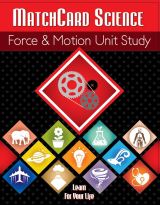
It will take four to six weeks to complete the seven objectives in this Unit Study.
Download the entire Force And Motion Unit Study.
12 Science Unit Studies

Chemistry is only one of twelve complete unit studies for kids in 3rd to 8th grade.
Comprehensive objectives, hands-on projects, suggested science fair experiments, and the fun game-like MatchCards keep them interested in learning science. See all twelve MatchCard Science Unit Studies.
About Our Site
Hands-On Learning













